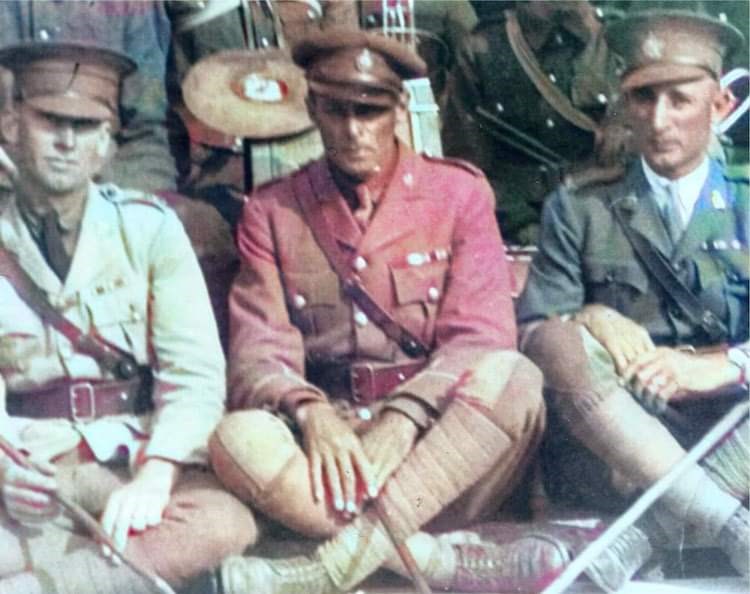UNITY — Charles E. Baker is not only a First World War veteran awarded a bravery medal, he was also a founding member of Unity’s Legion Branch, chartered in 1930.
Baker served in the Princess Patricia Canadian Light Infantry in the First World War. He enlisted Aug. 26, 1914, at age 32, in Ottawa, Ont. His civilian occupation was farmer and he also saw service in Great Britain, prior to relocating to Canada.
Baker returned to Unity for a brief time following his active duty and moved to Richmond, B.C. in 1937, for health reasons, where he passed away
Baker was born in Hailsham, Sussex England May 31, 1882. He joined the Royal Navy for six and a half years. He made his way to Ottawa and signed on with the PPCLI to be part of Canadian Expeditionary Force in the First World War, making his way through the ranks to become Company Sergeant Major, the highest rank for a non-commissioned officer.
Some of his grandchildren say they learned that Baker was the guy on the ground who got everyone moving in one direction. He received the CM or Distinguished Conduct Medal for bravery, which was the highest honour awarded to non-commissioned officers, awarded because he and his men were pinned down by a German machine gun nest and they were able to neither advance or retreat. Baker took it upon himself to raid the nest. As a result, he was hospitalized for injuries.
Baker was part of the battle April 9, 1917, with the Princess Patricians, which is known today as part of the Regiment at Vimy.
A supplement to the London Gazette published in April of 1918, provided to the Press-Herald, states that Baker’s medal was a result of, “ … conspicuous gallantry and devotion to duty since the beginning of the war. On one occasion, during an attack, owing to officer casualties, he found himself in command of his company. He led it with great courage and skill, capturing the final objective, and successfully consolidating it under heavy fire.”
Upon Baker’s return to Canada, after the war, he was awarded land under the Solider Settlement Act. He farmed outside of Unity living into a house east of the existing credit union on 2nd Avenue, later moving to live on the farm.
His wife, Ida, whom he married in 1922 in Saskatchewan, and her brothers went to school at Alfred Knowles School which was 10-15 miles from town.
Baker’s health deteriorated due to war exposure to mustard gas, so he was moved, in 1936, to Burnaby, B/C. for better weather and to be closer to VA hospital for treatments. Charles remained there until he passed away from complications of exposure to gases used in battle action.
— Information provided to the Press-Herald by grandsons Michael Kramer and Douglas Baker




